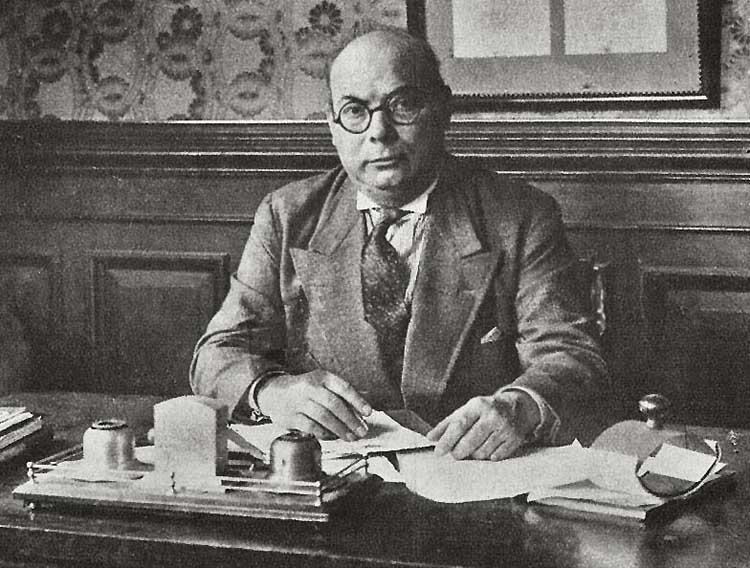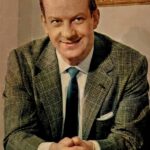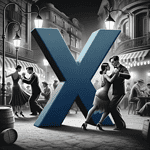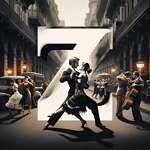Dive into the captivating world of Argentine Tango with a closer look at the life and contributions of José González Castillo. This influential figure left an indelible mark on the realms of drama, cinema, and, of course, tango music. From his early years in Rosario to the establishment of the University Popular de Boedo, let’s unravel the story of a man who not only shaped the tango scene but also left an enduring legacy.
Early Life and Anarchist Ideals
José González Castillo‘s journey began on January 25, 1885, in Rosario. Raised by a Galician father and an Argentine mother, his early exposure to diverse influences laid the groundwork for his eclectic career. Despite an attempt at a religious upbringing, González Castillo embraced anarchist ideals, steering away from the path of priesthood.
The Dramatist Emerges
González Castillo’s foray into the world of drama commenced in 1905 with “Los Rebeldes,” a play staged by a group of anarchists. However, it was in 1907, with the staging of “Del Fango,” that his name gained recognition. This marked the beginning of a prolific career, with notable works like “La Serenata” and “El Mayor Prejuicio.”
The Groundbreaking “Los Dientes del Perro”
A pivotal moment in González Castillo’s career occurred on April 20, 1918, with the premiere of “Los Dientes del Perro.” This sainete, co-written with Alberto T. Weisbach, revolutionized the incorporation of tango into dramatic performances. The play featured live performances by Roberto Firpo’s orchestra, introducing the iconic tango “Mi Noche Triste.”
Tango Maestro and Letrista
Beyond his achievements in drama, Jose González Castillo made significant contributions to tango music. His first tango, “¿Qué has hecho de mi cariño?,” debuted in 1918, later recorded by the legendary Carlos Gardel. Subsequent tangos like “Sobre el Pucho” (1922) and “Silbando” (1923) solidified his position as a maestro of tango lyrics, each piece resonating with the soul of Buenos Aires.
Cultural Dissemination and Legacy
González Castillo’s dedication to education and culture manifested in the founding of the University Popular de Boedo in 1928. This institution became a beacon of enlightenment for over two decades, offering a variety of classes and nurturing artistic talents. His contributions extended to cinema, where he wrote the scripts for silent films like “Nobleza Gaucha” (1915) and later, sound films like “La Ley que Olvidaron” (1938).
Personal Life and Family
Intriguing facets of González Castillo’s personal life include his unconventional relationship with Amanda Bello, with whom he had three children. His son, Cátulo Castillo, also became a renowned figure in the tango world. Despite his death on October 22, 1937, González Castillo’s legacy lives on through his family and the enduring influence of his works.
10 Most Important Tango Songs by José González Castillo
- “Mi Noche Triste”
- Recording Year: 1917
- Orchestra: Roberto Firpo
- Singer: Manolita Poli
- Details: Featured in “Los Dientes del Perro,” this timeless tango encapsulates the essence of lost love, marking a pivotal moment in González Castillo’s career.
- “Sobre el Pucho”
- Recording Year: 1922
- Orchestra: Sebastián Piana
- Details: Winner of the Tango Cigarette competition, this tango paints a vivid picture of the streets of Pompeya, resonating with the sorrow of lost love.
- “Silbando”
- Recording Year: 1923
- Orchestra: Sebastián Piana
- Singer: Azucena Maizani
- Details: Premiered at the Teatro San Martín, “Silbando” weaves a poetic narrative of betrayal, new love, and vengeance.
- “Griseta”
- Recording Year: 1924
- Orchestra: Enrique Delfino
- Details: Set in a cabaret, “Griseta” draws characters from French novels, portraying the tragic fate of a French girl in the harshness of the Argentine arrabal.
- “Aquella Cantina de la Ribera”
- Recording Year: 1926
- Orchestra: Cátulo Castillo
- Details: This tango reflects on the vibrant life of a riverside tavern, capturing the spirit of Buenos Aires.
- “Organito de la Tarde”
- Recording Year: 1923
- Orchestra: Cátulo Castillo
- Details: Infused with the essence of an afternoon organ grinder, this tango captures the nostalgic atmosphere of Buenos Aires.
- “Papel Picado”
- Recording Year: Not specified
- Orchestra: Cátulo Castillo
- Details: A melodic exploration reflecting on life’s ephemeral nature, “Papel Picado” remains a cherished piece.
- “Acuarelita del Arrabal”
- Recording Year: 1925
- Orchestra: Cátulo Castillo
- Details: This tango, with its picturesque lyrics, paints a vivid portrait of life in the arrabal.
- “Milonga en Rojo”
- Details: Co-written with Roberto Fugazot and Lucio Demare, this milonga dance piece captures the rhythmic essence of the dance floor.
- “¿Qué has hecho de mi cariño?”
- Recording Year: 1918
- Orchestra: Juan Maglio (Pacho)
- Singer: Carlos Gardel
- Details: González Castillo’s first tango, it set the stage for his prolific career, and its enduring melody continues to resonate with tango enthusiasts worldwide.
Frequently Asked Questions about José González Castillo
How did José González Castillo contribute to the incorporation of tango into dramatic performances?
González Castillo’s groundbreaking work, “Los Dientes del Perro” (1918), featuring live tango performances, marked a turning point, making tango an integral element of sainetes.
What was the significance of “Sobre el Pucho” (1922) in González Castillo’s tango career?
“Sobre el Pucho” not only won the second prize in the Tango Cigarette competition but also set a new direction in tango, depicting the streets of Pompeya and the metaphorical loss of a love.
How did González Castillo contribute to education and culture?
In 1928, he co-founded the University Popular de Boedo, fostering cultural dissemination for over two decades. Additionally, he established Peña Pacha Camac, a vital cultural center offering diverse classes.
Notable Sources
- Hilda Guerra’s insightful exploration in the Clarín newspaper: Las mil vidas de José González Castillo
- José Gobello’s detailed accounts in Mujeres y hombres que hicieron el tango and Tangos y letristas tomo 1.






